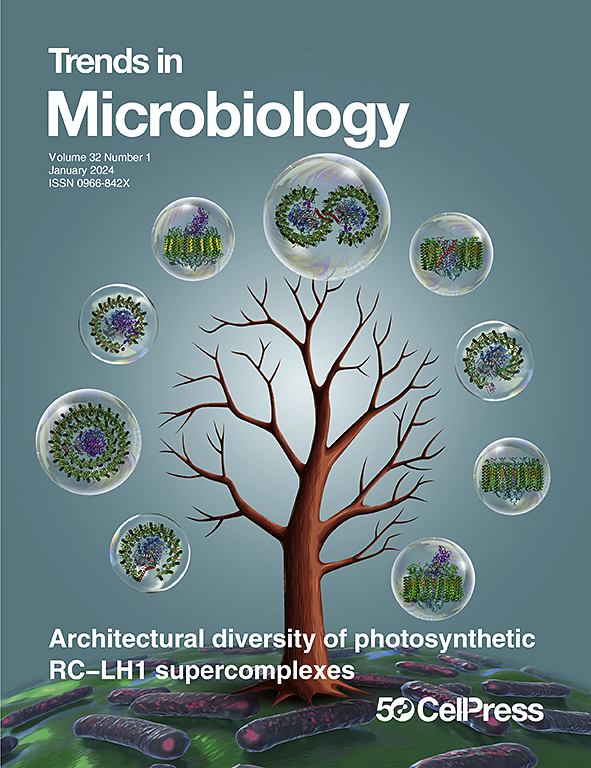解决质球问题:单细胞拉曼光谱框架。
IF 14
1区 生物学
Q1 BIOCHEMISTRY & MOLECULAR BIOLOGY
引用次数: 0
摘要
传统的大分子方法往往受限于其破坏性和低空间分辨率,在探测质球复杂的动态时面临挑战。在这里,我们概述了一个采用拉曼光谱与稳定同位素剖析(SIP)相结合的框架,以探究质球微生物组的生理功能并追踪其进化轨迹。本文章由计算机程序翻译,如有差异,请以英文原文为准。
Tackling the plastisphere: the single-cell Raman spectroscopy framework.
Conventional bulk molecular approaches, often limited by their destructive nature and low spatial resolution, face challenges when probing the intricate dynamics of the plastisphere. Here, we outline a framework employing Raman spectroscopy combined with stable isotope profiling (SIP) to interrogate the physiological function of the plastisphere microbiome and track its evolutionary trajectories.
求助全文
通过发布文献求助,成功后即可免费获取论文全文。
去求助
来源期刊

Trends in Microbiology
生物-生化与分子生物学
CiteScore
25.30
自引率
0.60%
发文量
193
审稿时长
6-12 weeks
期刊介绍:
Trends in Microbiology serves as a comprehensive, multidisciplinary forum for discussing various aspects of microbiology, spanning cell biology, immunology, genetics, evolution, virology, bacteriology, protozoology, and mycology. In the rapidly evolving field of microbiology, technological advancements, especially in genome sequencing, impact prokaryote biology from pathogens to extremophiles, influencing developments in drugs, vaccines, and industrial enzyme research.
 求助内容:
求助内容: 应助结果提醒方式:
应助结果提醒方式:


